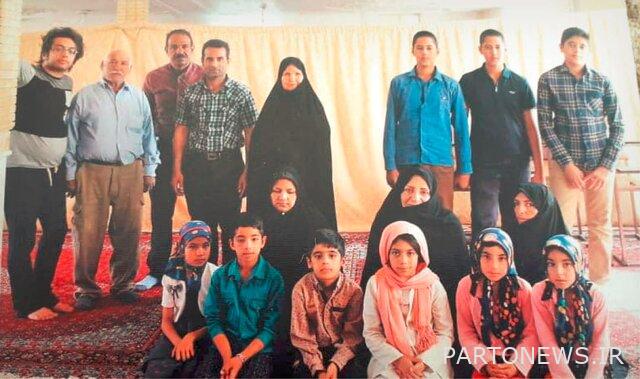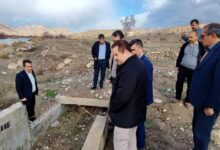What is going on in the village of the twins?

A few years ago, a report was published about the village of “Shahrabad” in the Abarkooh district of Yazd, and the name “Village of the Twins” came to the fore. According to the report, out of the 240 population of Shahrabad, 40 of them are twins, ie 16% of the total rural population, while in the world, one out of every 42 births is a twin, which becomes about 3%; This statistic, of course, is related to recent years, when the use of treatment methods such as HIV, twinning has increased in the world.
According to ISNA, “Khorasan” newspaper further wrote: What is happening in Shahrabad? What could be the reason for the high rate of twins? Has the reputation of this village for its twins had any effect on the residents? In conversations with urban dwellers and a geneticist, we try to answer these questions.
Sedigheh Sadeghzadeh, the mother of Mahdieh and Abolfazl, is a 14-year-old twin. The children are not home and I can not talk to them. Mahdieh went to her grandmother’s house to take care of her, and Abolfazl, as her mother says, went to the well and followed the sheep. Children in Abarkuh, like all other villages, work from an early age. I ask Ms. Sadeghzadeh when they found out that the number of twins has increased in the village: “I remember we had a lot of twins in Abarkooh, but no one knows why. Several people came from Tehran to investigate, but in the end they did not understand why we were giving birth to twins. It may be hereditary. “Finally, my grandmother gave birth to twins.” Ms. Sadeghzadeh continues: “Now the twins are scattered. They went to Abargo [ابرکوه], Shiraz and other cities. In the early days, when they were in large numbers, they came to see and take pictures. The photos of the children were even published in the newspaper, but nothing happened. “That means the situation in the village did not change.” What is it like to live in a place where faces are constantly repeated? “It has become normal for us,” says Ms. Sadeghzadeh. “We do not confuse twins, because we all know each other.”
Abolfazl Zare, 35, is an accountant, has lived in Shiraz for several years, and has been back in the village for five or six months now. Abolfazl, who is an only child, says about twinning in their village: “The story of our village was published only in one piece. Inquiries and research were conducted, but there were no reports of medical tests or serious studies. The same news did not bring much income to the village, while it could have been an excuse to attract tourists, but the tourism infrastructure in Shahrabad is weak. In addition, for economic reasons, over a period of 30 to 40 years, about 70% of the village population, which is mostly farmers, migrated to large cities, mainly Shiraz, to find work and turned to self-employment. I also lived in Shiraz for 10 years. Now, due to the age of my parents, I have returned to the village and I believe that Shahrabad has a high tourism capacity. Old historical monuments such as water mill, brick glacier and castle are some of the tourist attractions of our village, but no budget is spent on the restoration of these monuments and no advertisements are made to attract tourists. “We do not even have a residence in the village. Of course, the residents are interested in investing in tourism, but there are no basic facilities.”
Hossein Zare is 26 years old, a resident of Abarkooh and a graduate student in International Relations at the University of Tehran. Although Hussein does not live in Shahrabad, he is aware of the problems of his father’s hometown, as he regularly visits the village: Shahrabad became famous for its twins, but its reputation for lack of water is no less. Decreased rainfall and declining groundwater aquifers have caused agricultural wells to dry up, resulting in less and less harvest each year. Because agriculture is the main source of income for the people, water scarcity has affected them and most of them live below the poverty line. Those who could afford it also migrated to the city. Shahrabad health and educational facilities are very poor. “The only village school has only primary school, and people have to go to Abarkooh hospital to receive medical services.” I would like to ask Hussein to explain a little about the characteristics of Shahrabad: “You know that Yazd province is known for its special secret mourning, very regular breastfeeding and epic lamentations. In Abarkooh city, of which Shahrabad is a subset, this mourning has a unique and special feature. We have the largest delegation in the country. There are two types of mourning ceremonies; The type of resident who breastfeeds in mosques and religious places, and the type who moves while walking in the streets and alleys. “The delegation has been nationally registered in our city.”
“Seyed Reza Mousavi” is 30 years old, he is engaged in agriculture and animal husbandry, he makes humorous clips in cyberspace and he also has a hand in singing. Reza is satisfied with living in the village, because: “If someone has a safe way to make a living, the village is a safe place to live. “It is quiet, everyone knows each other, and the sincere relationship between people is not something that gets stuck in big cities.” Of course, economic problems have made life in the village difficult in recent years: “Of the 40 twins we had in Shahrabad, now maybe 20 are left in the village. Many left the village, but since the Housing Foundation handed over the land and provided loans, a number of migrants have returned. For some time now, efforts have been made to protect the historical fabric of the village in the form of the “Hadi” plan. Except for the buildings that were on the way and were destroyed, most of the houses are still mud-brick. We also have valuable historical monuments, which, of course, have not been far from damaged. Including a double castle that is more than two centuries old. 14 years ago, due to a burst pipe, all the water in the castle leaked for a week and half of it was leveled with soil. Last year, part of it fell due to rain. I spent some time trying to rebuild the castle, but it was not possible alone and I did not receive any support. Once I tried to start a festival of twins in the city to attract attention and tourists, but for that no institution was willing to help and support. There are many tourist attractions in our village; Including the garden of “Aghazadeh”, which is the property of a unique 400-year-old lord. Aghazadeh Mansion in Abarkooh – the same building whose image is on the 2,000 Toman banknote – with its two-story windshield is considered an architectural masterpiece, even in Yazd province, which is known for its windshields, is a unique example. “The stone dome and crypt are also among our heritage, which can attract attention along with the twin population.”
“Narges” and “Najmeh Zare” are identical 17-year-old twins who study tailoring at Abarkooh Conservatory. Narges explains to me about the twin life in Shahrabad: “My sister and I understand each other very well, we help each other if something goes wrong and we understand the reason for each other’s unhappiness without needing to talk. Our scores and sometimes even our dreams are the same. Sometimes we are mischievous. “If someone calls me and I do not have the patience to answer, I will send my sister in my place. Of course, there is not much possibility of mischief in school because the teachers know us very well.” Isn’t it confusing and troublesome for twins to be mistaken for each other? “Because the village is small, everyone knows each other and we don’t get too confused,” says Narges. Honestly, I thought people in Shahrabad were constantly looking at each other and asking, “Who were you?” But this is not the case. What do the villagers think about twinning? “Well, the people here have so much work and trouble that no one thinks about why we have so many twins,” explains Narges. “Some people who come from outside the village say it is because of a consanguineous marriage, but in the village we also have a non-consanguineous marriage, like my parents.” Narges says that women in Shahrabad have no job and no source of income. He and his sister, however, would like to set up a sewing workshop in their village one day and be working women in their village: “Right now I am doing my best to become a good tailor.”
The high number of twins in an area is not limited to Shahrabad. The birth rate of twins in the Indian village of Kodinah is almost six times the world average. Benin has the highest national average of twins in Central Africa at 27.9 per thousand live births, and Nigeria’s Igbo Aura is the twin capital of the world. Bahareh Najd, a master geneticist, explains the reasons for the increased chances of having twins in an area.
Before addressing the issue of Shahrabad, please explain how twinning occurs?
We know that a woman’s ovaries normally produce one egg each month. If, after the egg is released, the sperm reaches it, they combine and an egg cell is formed. Now if an egg splits into two parts after fertilization, we will have identical twins, and if two eggs are released during fertilization instead of one, and each of them combines with a sperm, two egg cells are formed and the twins are heterogeneous. they take; This is a genetically heterogeneous twin condition that is passed from mother to child. Of course, a father can pass it on to his daughter, but he himself has no better chance of having twins because his genes do not affect his wife’s ovulation. In the same way, polygamy may occur, but it is much less likely.
What causes twinning?
Twinning and polygamy is a genetic coincidence. A woman who has the twin gene passes it on to her child, but that does not mean that her child must have a consanguineous marriage to give birth to twins; However, he has the twin gene, but if we want to study this issue accurately and scientifically, we must draw and study the pedigree of the group in question, but in general, the old age, height and high weight of the mother play an important role in causing this phenomenon.
How does the birth rate of twins increase in one area?
The subject in question is that because the village is a small community, the members do not leave it and have a consanguineous marriage, the twin gene is repeated in their area until there is no abnormality, this high rate of twins compared to the average community is not a problem. .
Is genetics also involved in the rise of global twin statistics in recent years?
In contemporary life, environmental factors such as nutrition, harmful waves, air pollution and تأثیر have affected the quality of male sperm and reduced fertility. For this reason, the use of assisted reproductive techniques such as “IowaF” and “Iowa” has increased. These methods may cause monozygotic or identical twins due to their effect on embryonic cell division. However, no doctor recommends assisted reproductive techniques for twins to a person who has no fertility problems.

